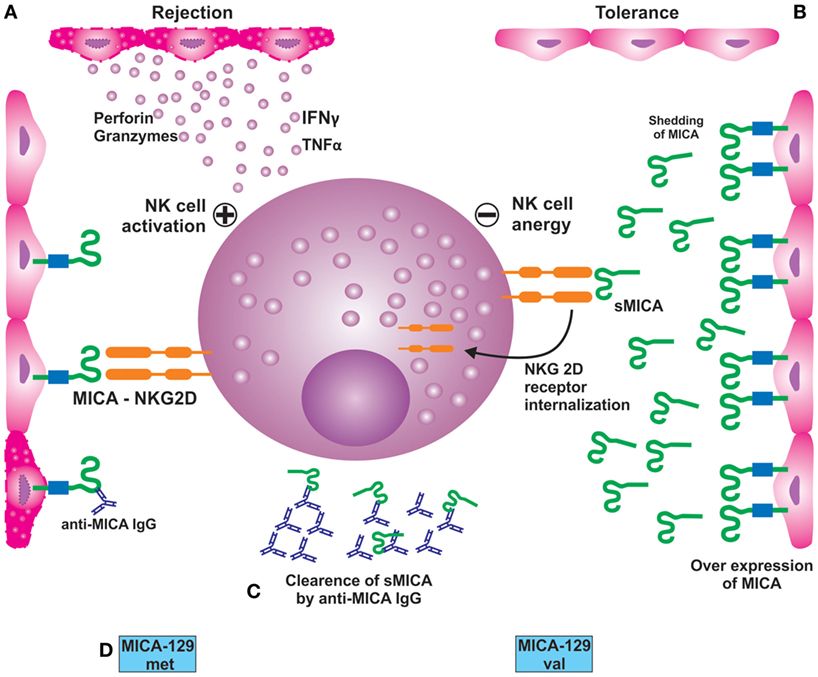What is MICA Protein
MICA, an acronym for Major Histocompatibility Complex Class I Chain-Related Molecule A, is a fascinating protein that plays a pivotal role in the immune system. Also known by its official full name and synonyms such as PERB11.1, MHC class I polypeptide-related sequence A, and MIC-A, this protein belongs to the major histocompatibility complex (MHC) class I family.
MICA Protein Structural Characteristics and Classification
Structurally, MICA protein exhibits distinct characteristics, with a transmembrane domain and a cytoplasmic tail. It is classified as a stress-induced ligand, as its expression is upregulated under conditions of cellular stress. Recent research advances have shed light on the dynamic nature of MICA and its involvement in immune responses.
MICA Biological Functions and Molecular Mechanisms
The biological functions of MICA are integral to the immune system's surveillance and response mechanisms. MICA serves as a ligand for the NKG2D receptor, predominantly expressed on natural killer (NK) cells and CD8+ T cells. This interaction is crucial for the detection and elimination of stressed or infected cells.
At the molecular level, MICA-NKG2D binding triggers cytotoxicity, promoting the destruction of abnormal cells. Furthermore, MICA-NKG2D interactions can enhance the immune response by stimulating cytokine production and promoting the activation of immune cells. This dual functionality positions MICA as a key player in immune surveillance and defense.

Figure 1. Soluble MICA (sMICA): role in solid organ transplantation. (Baranwal A K, et al., 2017)
MICA Related Signaling Pathway
The MICA-related signal pathway primarily revolves around the NKG2D receptor. Upon MICA binding, NKG2D initiates signaling cascades that activate cytotoxic responses in immune cells. This involves the phosphorylation of key signaling molecules, such as MAP kinases and PI3 kinases, leading to the release of cytotoxic granules and the induction of apoptosis in target cells.
Additionally, MICA-NKG2D interactions can influence the expression of immune regulatory molecules, contributing to the overall immune response. Understanding this signal pathway is crucial for deciphering the nuanced role of MICA in immune surveillance and its implications in disease states.
MICA Related Diseases
Anomalies in MICA expression or function are associated with various diseases. In certain cancers, such as colorectal and gastric cancers, elevated levels of MICA have been observed, contributing to immune evasion by tumor cells. Conversely, autoimmune diseases like rheumatoid arthritis and systemic lupus erythematosus are linked to aberrant MICA expression, leading to inappropriate immune responses against healthy tissues.
Understanding the intricate involvement of MICA in these diseases opens avenues for targeted therapeutic interventions aimed at modulating MICA expression or blocking its interactions with NKG2D.
MICA's Applications in Biomedicine
The unique properties of MICA make it a valuable asset in biomedical research and applications. In diagnostic development, MICA can be utilized as a biomarker for certain cancers, aiding in early detection and prognosis. Researchers are exploring the potential of MICA-based assays for precise and sensitive diagnostic tools.
In vaccine development, MICA's involvement in immune activation makes it an attractive target. Strategies to harness MICA-NKG2D interactions for enhancing vaccine efficacy are under exploration, holding promise for the development of more potent vaccines against infectious diseases and cancers.
Moreover, MICA is a candidate in therapeutic interventions. Blocking MICA-NKG2D interactions is being investigated as a strategy to prevent immune evasion in cancers. Clinical trials exploring the efficacy of MICA-targeted therapies are underway, offering a glimpse into the future of precision medicine.
Recommended Products
| Cat.# | Product name | Species | Source (Host) | Tag |
|---|---|---|---|---|
| MICA-1280H | Recombinant Human MICA protein | Human | E.coli | N/A |
| MICA-07H | Recombinant Human MHC class I polypeptide-related sequence A | Human | E.coli | N/A |
| MICA-3970H | Recombinant Human MICA protein, His-tagged | Human | HEK293 | His |
| MICA-964H | Recombinant Human MICA protein, His-Avi-tagged | Human | HEK293 | His-Avi |
| MICA-5319H | Recombinant Human MICA Protein, GST-tagged | Human | Wheat Germ | GST |
| MICA-1235H | Recombinant Human MICA Protein, MYC/DDK-tagged | Human | HEK293 | Myc/DDK |
| MICA-6630H | Recombinant Human MICA Protein, Myc/DDK-tagged, C13 and N15-labeled | Human | HEK293T | Myc/DDK |
| MICA-746HFL | Recombinant Full Length Human MICA Protein, C-Flag-tagged | Human | Mammalian cells | Flag |
| MICA-051H | Active Recombinant Human MICA protein, Fc/Avi-tagged, Biotinylated | Human | CHO cells | Fc/Avi |
| MICA-6555HF | Recombinant Full Length Human MICA Protein, GST-tagged | Human | In Vitro Cell Free System | GST |
Reference
- Baranwal A K, Mehra N K. Major histocompatibility complex class I chain-related A (MICA) molecules: relevance in solid organ transplantatio. Frontiers in Immunology. 2017, 8: 182.

